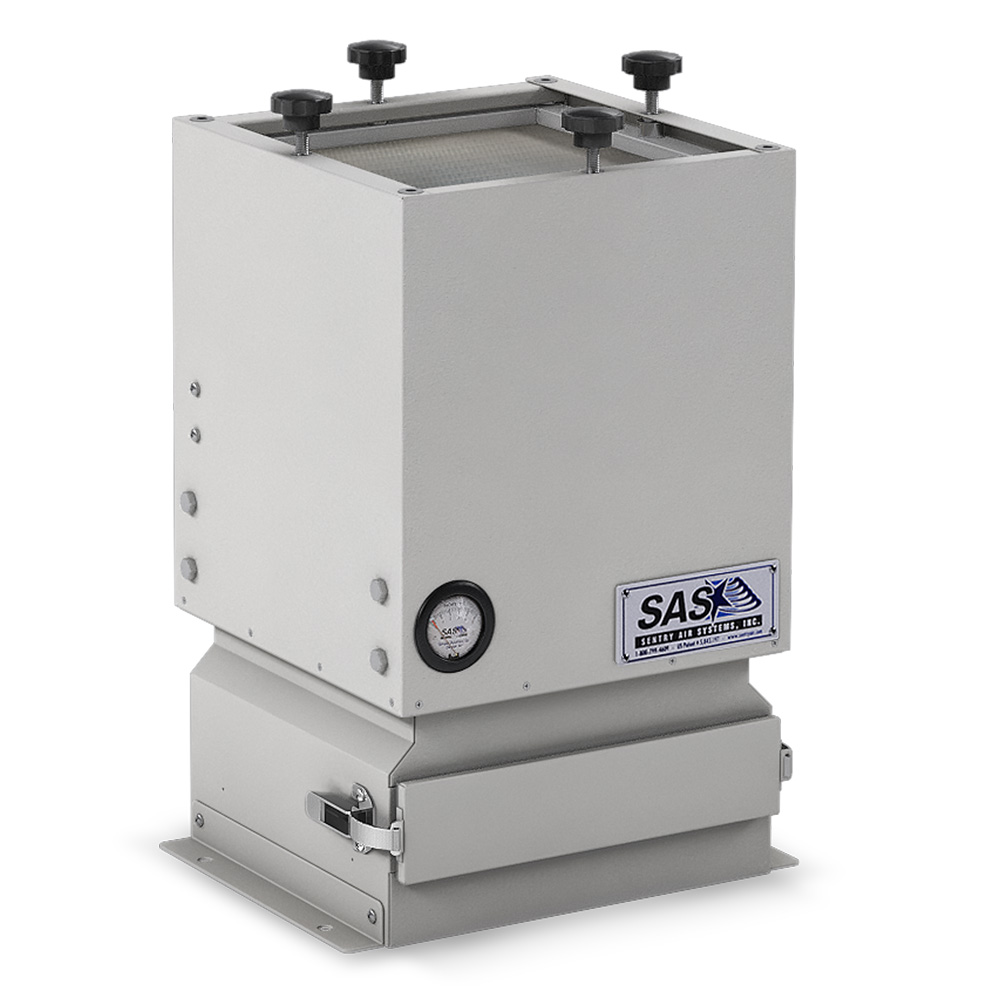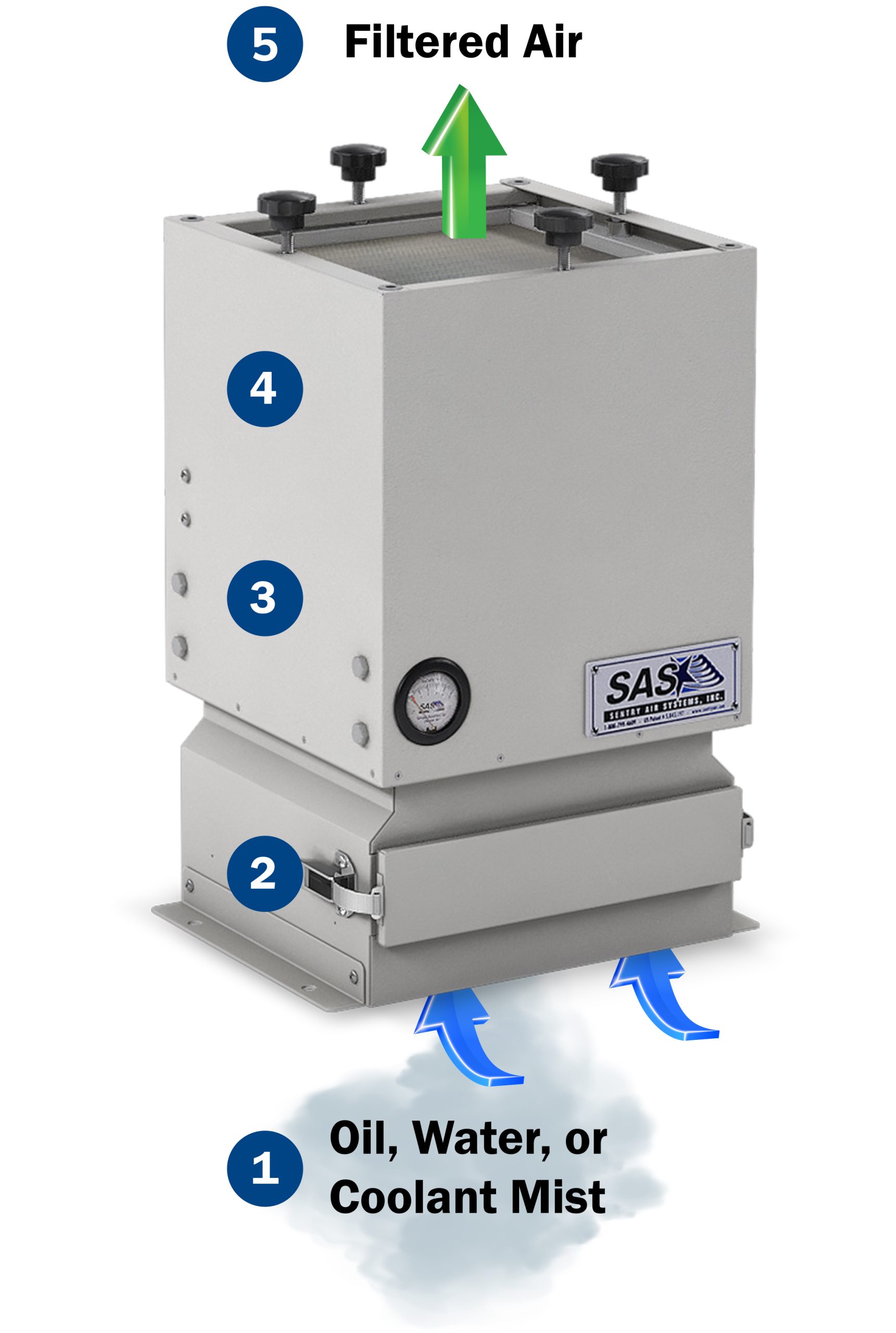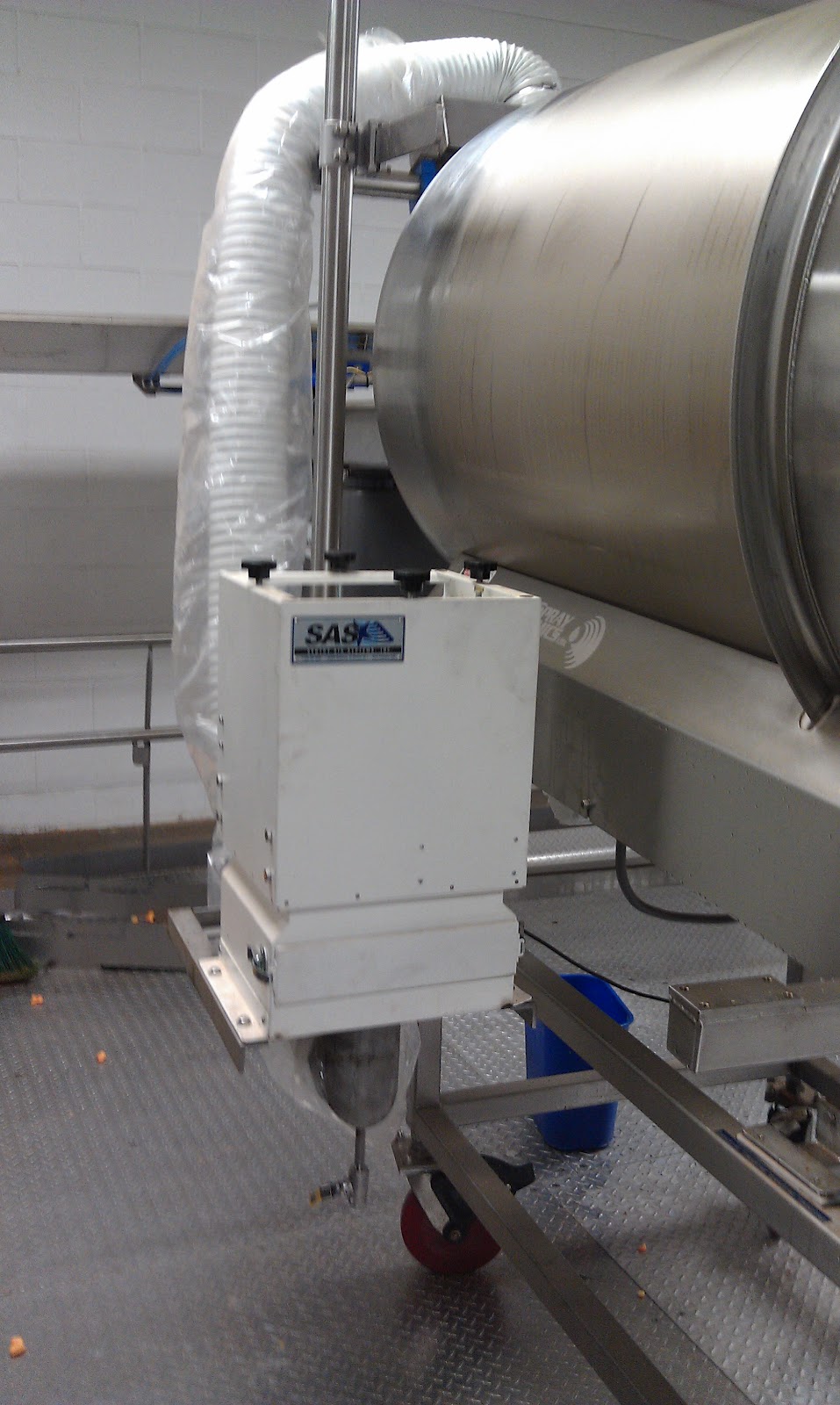Pretzels, Inc. has been in the baked snack food business for over 30 years and produces a multitude of pretzel products as well as flavored corn products.
Model 300 Mist Collector at Pretzels, Inc.
Purpose of the Unit
“The application I used the SS-300-MIST unit for was at the entrance of our oil applicator for the seasoned product lines. We apply a mist of oil to the product as it travels through the tumbler so that the dry seasoning powders will stick to the product. The oil misting creates a fog that escapes from the tumbler and collects on the exterior of the drum or on the floor creating an unsafe condition and would allow the drive rollers to slip on the exterior of the drum causing a buildup of product inside the drum.”
Marcus Wagner, Pretzels Inc.
Typical Hours of Usage
“Depending on customer requirements we run the system 12-16 hours a week on average.”
Pretzels, Inc. Evaluation of Model 300 Mist Collector
“The oil mist would collect on the exterior of the drum which would cause the drive roller to slip. When the drum would stop, the product would continue to feed and overflow the drum spilling onto the floor. This not only created waste product it caused a safety hazard from the oil on the metal decking. I had prior experience in the metal cutting industry and was familiar with the oil mist collection equipment and felt it may work for our application. When I contacted Sentry, they were willing to send me a unit on trial since they had not tried it in a food application previously. We mounted the compact unit to the tumbler frame and installed a small collection hood and hose to the entrance of the drum and have had no issues with the excessive oil mist collecting on the exterior of the drum or deck plate.”
Marcus Wagner, Pretzels Inc.
Vegetable Oil Mist Respiratory Hazards
Inhaling vegetable oil mist and other food oil mists can have detrimental health side effects such as airway irritation and can even lead to pneumonia (Svedahl 2009). Cooking fumes can cause respiratory disorders and impaired pulmonary function (Svedahl 2009). OSHA and NIOSH have exposure limits for vegetable oil inhalation. Read the table below for the exposure limits (NIOSH 2019). OSHA regulations are legally enforceable while NIOSH’s limits are recommended.
Vegetable Oil Mist Exposure Limits
| OSHA PEL | TWA 15 mg/m3 (total) TWA 5 mg/m3 (resp) |
| NIOSH REL | TWA 10 mg/m3 (total) TWA 5 mg/m3 (resp) |
About the Model 300 Mist Collector

The Model 300 Mist Collector captures airborne mist from a variety of oil-mist producing processes.
This system draws in mist into the unique washable mist filter, removing most of it from the ambient air, and releases the filtered air back into the surrounding room. By creating a recirculating airflow pattern, the Model 300 Mist Collector does not require external exhausting or ductwork. Also, this unit after collecting mist vapors, it conveniently drains the oil back into the machinery itself and may be reused depending upon the application. This mist collector utilizes a triple filter setup featuring the unique washable mist pre-filter, activated
carbon pre-filter, and choice of main filter including HEPA filter (up to 99.97% efficiency on particles 0.3 microns and larger) and ASHRAE filter (up to 95% efficiency on particles 0.5 microns and larger).
How do Oil Mist Collectors Work?
 1. A powerful fan draws in oil, coolant, or water mist from the machine into the filtration chamber.
1. A powerful fan draws in oil, coolant, or water mist from the machine into the filtration chamber.
2. The Mist Pre-Filter removes most of the oil, coolant, and water from the air and collects it. The mist collected can be drained back into the machinery for reuse depending on the application.
3. The Carbon Pre-Filter captures some of the large particles and removes them from the airflow.
4. The Main Filter filters the air and removes most of the remaining small particles. The efficiency depends on the filter choice and application.
5. The system releases the filtered air back into the room eliminating the need for duct work.
How Mist Collectors Work Video
Technical Specifications
| Cabinet Dimensions | 15.5″ L x 13″ W x 21.25″ H |
| Weight | Approx. 55-60 lbs. |
| Cabinet Material | 16 ga. carbon steel w/ polyester epoxy coating on all surfaces |
| Motor: | Fractional Horsepower |
| Pre-Filters | Mist Pre-Filter & Activated Carbon Pre-filter |
| Main Filters | Choice of HEPA Filter (up to 99.97% efficient on particles 0.3 microns and larger) or ASHRAE Filter (up to 95% efficient on particles 0.5 microns and larger). |
| Air Volume | 300 CFM (high) to 50 CFM (low) |
| Electrical | 115/1/60, Approx. 2 amps 220/1/50, 0.75 amps |
| Sound Level | 61 to 66 dba (blower speed: low to high) |
Contact us today to learn about the benefits of mist collection and how we can help your facility!
Call us today! 1-800-799-4609
References
NIOSH (2019, Oct). Vegetable Oil Mist. The National Institute for Occupational Safety and Health (NIOSH). Retrieved from: https://www.cdc.gov/niosh/npg/npgd0655.html.
Svedahl, S., Svendsen, K., Qvenild, T., Sjaastad, A. K., & Hilt, B. (2009). Short term exposure to cooking fumes and pulmonary function. Journal of occupational medicine and toxicology (London, England), 4, 9. https://doi.org/10.1186/1745-6673-4-9

 Made in the USA
Made in the USA




